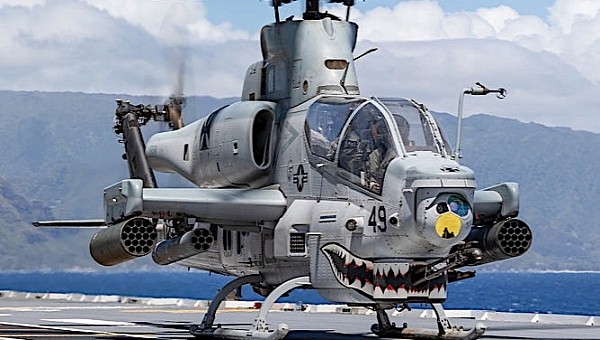Back in 1962, the United States Marine Corps (USMC) placed its first order for a helicopter Bell was building on the H-1 platform. It was the famed UH-1 Iroquois, also known as the Huey. It was followed by the AH-1 Cobra gunship, the twin-engine UH-1N, and more recently by the AH-1Z Viper and UH-1Y Venom siblings.
Bell has been at it making Vipers and Venoms for years now. The company completed the delivery of the 160 Venoms the USMC had ordered back in 2018. This week, we were told the Program of Record for the Viper is complete as well, making for a fleet 189 helicopters strong, ready to go into combat at any time.
Bell made the announcement about the Viper in a special ceremony held at the Amarillo Assembly Center. Even if for American needs the production lines will, at least for now, no longer spit out this kind of helicopters, Bell says they’ll keep rolling for allied nations like Bahrain and the Czech Republic.
“H-1s are key to the 2022 Marine Corps Aviation Plan,” said in a statement Col. Vasillios Pappas, Light/Attack Helicopters program manager (PMA-276).
“With the US program of record now complete, the Marines have the flexibility to manage and deploy the helicopters based on current and future mission requirements as established at the start of the program.”
The Viper is an attack helicopter introduced in 2000. Crewed by two, it is used for attack, aerial reconnaissance and escort duties, flying at speeds of 230 mph (370 kph). The Venom came to be in 2001, and is crewed by four airmen. It can transport eight soldiers for insertion to where they’re needed at slower speeds, 196 mph (315 kph).
Despite the fact the two aerial combat machines look quite different, under their skins they share 85 percent of components.
Bell made the announcement about the Viper in a special ceremony held at the Amarillo Assembly Center. Even if for American needs the production lines will, at least for now, no longer spit out this kind of helicopters, Bell says they’ll keep rolling for allied nations like Bahrain and the Czech Republic.
“H-1s are key to the 2022 Marine Corps Aviation Plan,” said in a statement Col. Vasillios Pappas, Light/Attack Helicopters program manager (PMA-276).
“With the US program of record now complete, the Marines have the flexibility to manage and deploy the helicopters based on current and future mission requirements as established at the start of the program.”
The Viper is an attack helicopter introduced in 2000. Crewed by two, it is used for attack, aerial reconnaissance and escort duties, flying at speeds of 230 mph (370 kph). The Venom came to be in 2001, and is crewed by four airmen. It can transport eight soldiers for insertion to where they’re needed at slower speeds, 196 mph (315 kph).
Despite the fact the two aerial combat machines look quite different, under their skins they share 85 percent of components.


































